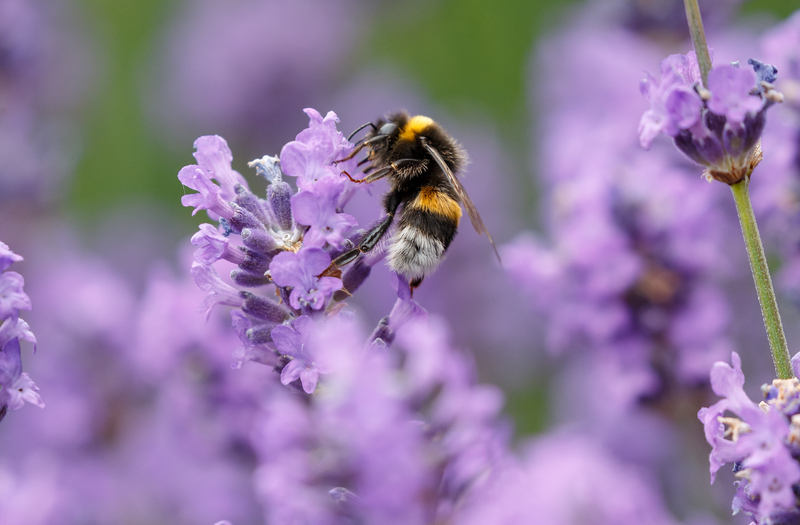Hot Season Watering and Mowing Guide
Posted on 17/03/2025
When the hot season arrives, maintaining your lawn and garden becomes even more challenging. Proper watering and mowing are essential to ensure that your plants remain healthy and your lawn stays lush. This guide dives deep into every aspect of watering and mowing during the hot season to help you keep your outdoor space in tip-top shape.
Understanding Your Lawn's Needs
Before delving into the specifics of watering and mowing, it's crucial to understand the needs of your lawn. Different grass types and plants have varying tolerances for heat and drought. Identifying what type of grass you have will help tailor your care regimen to fit perfectly.

Ideal Watering Techniques
Watering efficiently is crucial, especially during the hot season. Here's how:
- Early Morning Irrigation: Water your lawn early in the morning, typically between 4 AM and 10 AM. Doing so reduces evaporation and ensures that water reaches the roots effectively.
- Deep and Infrequent Watering: Instead of light daily watering, water deeply and less frequently. This encourages roots to grow deeper, making your lawn more drought-resistant.
- Use Sprinklers Wisely: Ensure your sprinkler system covers your lawn evenly. Avoid wasting water on sidewalks and driveways. Smart sprinkler systems can help optimize watering schedules.
- Check Soil Moisture: Use a soil moisture meter to avoid over or under-watering. The top 6 inches of soil should be moist but not waterlogged.
Mowing Best Practices
Mowing your lawn during the hot season requires some adjustments to ensure you're not stressing your grass. Follow these best practices:
- Mow Higher: Adjust your mower to a higher setting to leave your grass blades longer. Taller grass provides more shade to the soil, reducing evaporation and promoting root growth.
- Sharpen Blades Regularly: Dull blades tear the grass, causing more stress and increasing the chances of disease. Keep your mower blades sharp to ensure clean cuts.
- Mow Frequently: Regular mowing prevents overgrowth, but avoid cutting off more than one-third of the grass height at any one time.
- Avoid Mowing During Peak Heat: Mow your lawn in the early morning or late afternoon to minimize heat stress.
Dealing with Drought Stress
Drought stress can significantly affect your lawn during the hot season. Signs of drought stress include a bluish-gray tint to the grass, footprints that remain visible after walking on it, and crispy blades. To manage and mitigate drought stress:
- Prioritize Areas: Focus on watering areas that receive the most sun and traffic. Lesser-used areas can be watered less frequently.
- Avoid Fertilizing: Fertilizing can stress your lawn further by promoting growth when water is scarce. Hold off until cooler months.
- Utilize Mulch: Apply mulch around trees and shrubs to help retain moisture and protect plant roots from heat.
Watering and Mowing Equipment
Using the right equipment can make a significant difference in the health of your lawn. Look for:
- Smart Irrigation Controllers: These controllers can adapt watering schedules based on weather conditions, soil moisture, and plant needs.
- Mower with Adjustable Heights: An adjustable height mower allows you to set the ideal grass height for various conditions.
- Mulching Mowers: These mowers chop grass clippings finely, returning them to the soil as a natural fertilizer and moisture retainer.
Pros and Cons of Hot Season Lawn Care
Managing a lawn during the hot season has its challenges and benefits:
- Pros:
- Promotes deeper root growth, leading to a more drought-resistant lawn.
- Healthy lawn minimizes soil erosion and improves water infiltration.
- Can still achieve a lush and beautiful appearance with proper care.
- Cons:
- Requires more time and effort to maintain.
- Risk of over- or under-watering, which can damage the lawn.
- Increases water usage, which may be restricted in some areas.
Tips for Optimal Lawn Health
- Know Your Grass Type: Different grass types have different water and mowing requirements. Adjust your care regimen accordingly.
- Maintain Equipment: Regularly check and maintain your watering and mowing equipment to ensure efficient operation.
- Aerate Your Lawn: Aeration helps improve water penetration and root growth.
- Monitor Weather Conditions: Adjust your watering schedule based on rainfall and temperature variations.

Takeaways
- Water deeply and infrequently to promote deep root growth.
- Mow at higher settings to provide shade and reduce evaporation.
- Adjust your lawn care techniques based on drought stress signs.
- Utilize technology like smart irrigation controllers for optimal care.
Conclusion
Maintaining your lawn during the hot season requires thoughtful planning and diligent care. By understanding your lawn's specific needs and adjusting your watering and mowing practices, you can ensure that your outdoor space remains vibrant and healthy. Follow the tips and guidelines provided in this article to overcome the challenges posed by the hot season and enjoy a lush, green lawn all summer long.







